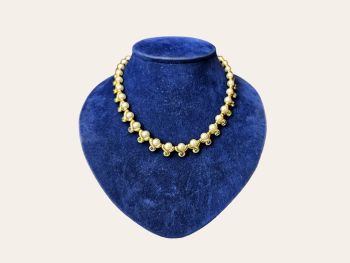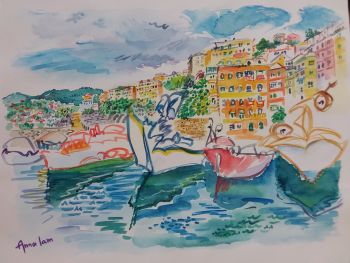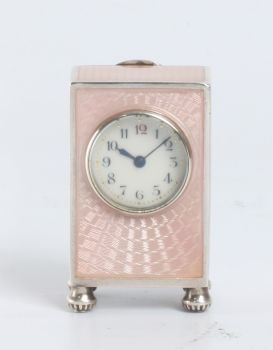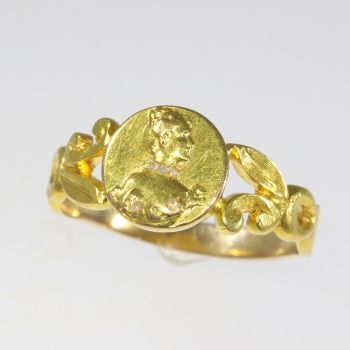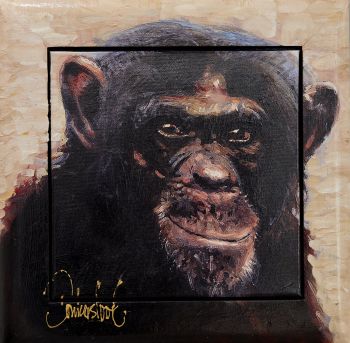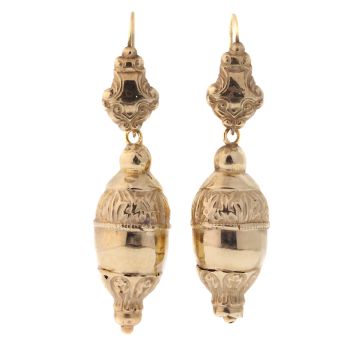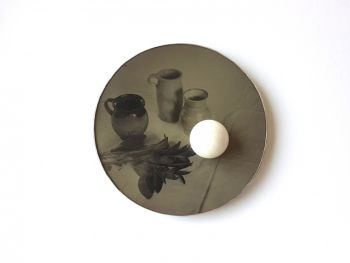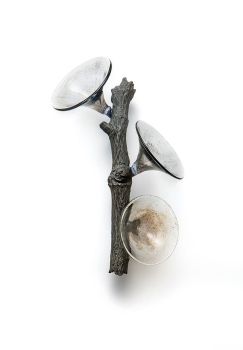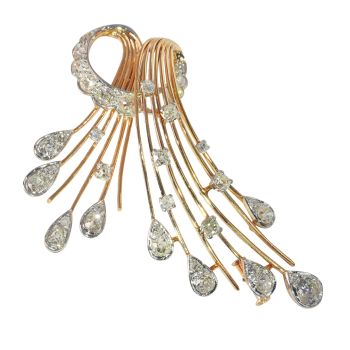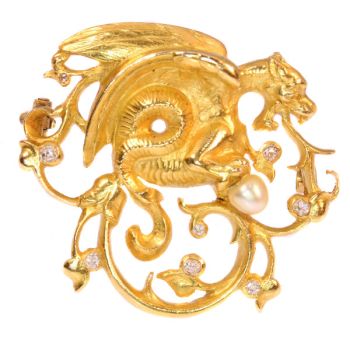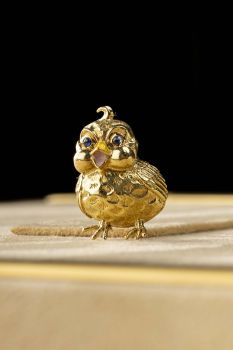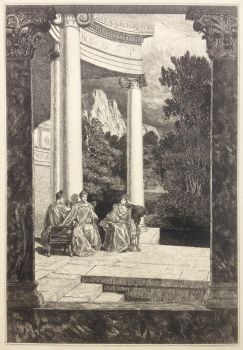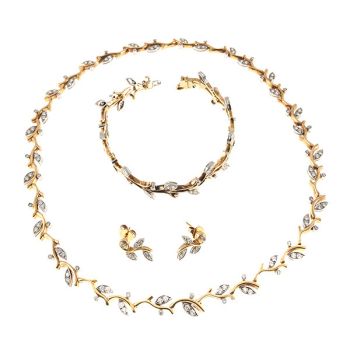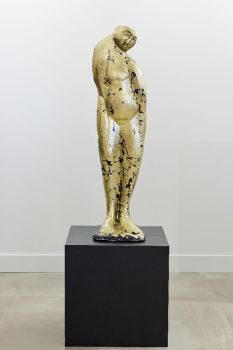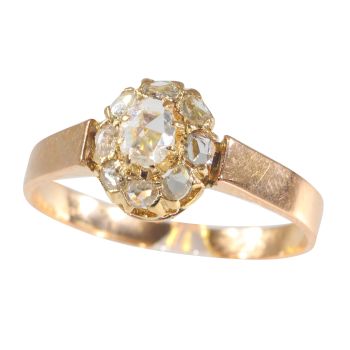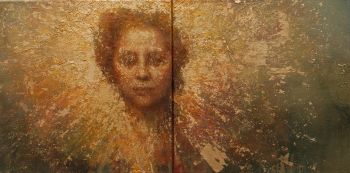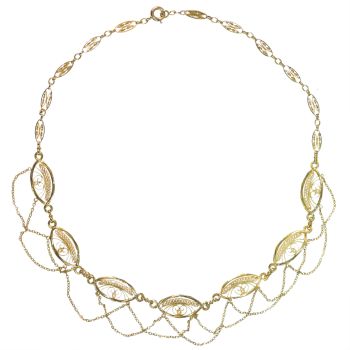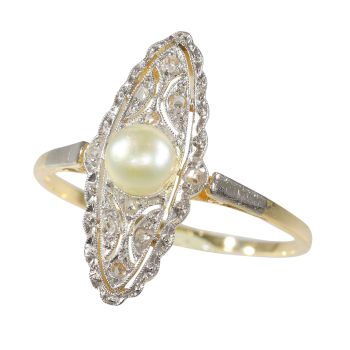Antique silver Roman coin mounted in antique Victorian brooch 1870
Unknown artist
Gold
€ 2.750
Adin Fine Antique Jewellery
- About the artwork
This brooch is a typical example of coin jewelry as made by Lucien Falize in circa 1890 (for examples see English translation of Vever on page 954 and further). The 18K gold mounting holds an ancient coin. As other jewelsby Falize it reveals an impeccable taste, despite the deliberate use of Classical sources and the beautiful works of the Renaissance in particular, which Falize knew and cherished above all others.
The coin itself has been recognized as an original ancient coin from 54 B.C.!
Antique jewelry object group: brooch
Condition: excellent condition
- (more info on our condition scale)
Country of origin:Although it does not carry any legible control marks we believe this to be of French origin.
Style: Victorian - Victorian decorative arts refers to the style of decorative arts during the Victorian era. The Victorian era is known for its eclectic revival and interpretation of historic styles and the introduction of cross-cultural influences from themiddle east and Asia in furniture, fittings, and Interior decoration. Victorian design is widely viewed as having indulged in a regrettable excess of ornament. The Arts and Crafts movement, the aesthetic movement, Anglo-Japanese style, and Art Nouveaustyle have their beginnings in the late Victorian era.
- See also: Victorianor more info on styles
Style specifics: The Grand Victorian Period - Experts divide the reign of Queen Victoria, also called The Victorian era (1837 - 1901) into three periods of about twenty years each; The Romantic Victorian Period (1837 - 1860), The Grand Victorian Period (1860 - 1880),and the Late or Aesthetic Victorian Period (1880 - 1901).
We consider this to be of the Grand Victorian Period.
This second Victorian period is famous for its ostentatious pieces set with pearls and diamonds (from South Africa). From ca. 1850 wealthy English had reported about jewelry from India and Japan, which heavily inspired the jewelers of this period. Thisperiod also corresponds with the death of Queen Victoria's husband King Albert making mourning jewelry (set with heavy dark stones) the type of jewelry specific for this period.
Period: ca. 1870
- (events and facts in 1870)
Description of coin: The coin represents the laurelled head of Santé (Salvtis). The back of the pendant showsSanté leaning on a pillar and holding in the right hand a snake (Nv. Acilivs III Vir. Valetv.).
Remarks on the coin master: The coin, a new monetary unit, with Manius as first name, proofs that he doesn't carryout his duty before approx. 700 (54 B.C.). In this era many historians were called Manius. One of them was Manius Acilius Glabrio. He was the son of a very important person, he battled under the command of Julius Cesar during the Civil war, hebecame many times governor.
Material: 18k yellow gold and silver.
- (more info on precious metals)
Hallmarks: No trace.
- (more info on hallmarks)
Dimensions: 4.70 cm (1.85 inch) by 2.70 cm (1.06 inch)
Weight: 12.00 gram (7.72 dwt)
Reference Nº: 01198-2660
Copyright photography: Adin, fine antique jewelry
- About the artist
It might happen that an artist or maker is unknown.
Some works are not to be determined by whom it is made or it is made by (a group of) craftsmen. Examples are statues from the Ancient Time, furniture, mirroirs, or signatures that are not clear or readible but as well some works are not signed at all.
As well you can find the following description:
•“Attributed to ….” In their opinion probably a work by the artist, at least in part
•“Studio of ….” or “Workshop of” In their opinion a work executed in the studio or workshop of the artist, possibly under his supervision
•“Circle of ….” In their opinion a work of the period of the artist showing his influence, closely associated with the artist but not necessarily his pupil
•“Style of ….” or “Follower of ….” In their opinion a work executed in the artist’s style but not necessarily by a pupil; may be contemporary or nearly contemporary
•“Manner of ….” In their opinion a work in the style of the artist but of a later date
•“After ….” In their opinion a copy (of any date) of a work of the artist
•“Signed…”, “Dated….” or “Inscribed” In their opinion the work has been signed/dated/inscribed by the artist. The addition of a question mark indicates an element of doubt
•"With signature ….”, “With date ….”, “With inscription….” or “Bears signature/date/inscription” in their opinion the signature/ date/ inscription has been added by someone other than the artist
Are you interested in buying this artwork?
Artwork details
Related artworks
- 1 - 4 / 12
- 1 - 4 / 24
- 1 - 4 / 24
Unknown artist
18th Century Diamond Bracelet with 2000-year-old Intaglios1790
€ 23.000Adin Fine Antique Jewellery
 Curated by
Curated byDanny Bree
Jean-François Rauzier
Chapelle Royale - Limited edition of 8 2010
Price on requestVilla del Arte Galleries
1 - 4 / 20- 1 - 4 / 24
- 1 - 4 / 12









